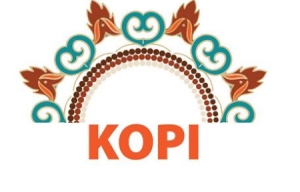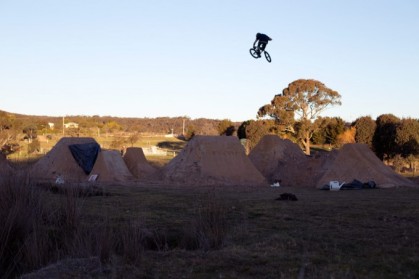I really liked week 9’s lecture which talked about branding.
Branding is NOT:
– a logo
-an identity
– a product.
Branding is the perceived emotional corporate image as a whole.(http://justcreative.com/2010/04/06/branding-identity-logo-design-explained/)
The way I think of branding is more like the relationship the customer has with a company/business/service/product. It is the combined effect of more subtle things such as the language used in promotional materials. It is the “personality” or “character” behind the company, if you were to imagine the company as a person what would the person be like- trustworthy, caring, edgy, safe, daring, young, old? Branding is also the communication channels chosen- social media would be a relatively new way of promoting a company, and could make a brand seem more current and also more open to communicating directly with customers due to the very nature of the medium.
From the lecture notes:
“Trust comes from meeting and beating
customer expectations
Trust = Reliability + Delight”
In relation to the coffee shop project, it will be important to think about branding not only in terms of the logo and the visual identity, but focus on the “feeling” of the shop. A question I put to my group in our tutorial discussion was:
What is going to make people choose our coffee shop over other coffee shops in the first instance? And what is going to make people keep coming back?
I don’t think that cheap prices and quality coffee (as stated in the brief) is enough. Coffee drinking is a culture in Australia and we need to tap into what makes other coffee shops popular despite them having high prices. There is obviously something that makes people go to certain coffee shops again and again and pay premium prices- and I believe it is all about the branding and developing trust over numerous visits. It is the way the staff interact with the customers, it is the way the interior makes people feel when they walk in -is it a comforting homely feel, or cool espresso bar ‘gotta-be-seen-here” vibe?
Trust is earned by providing fast reliable service (DO NOT forget a coffee order or make people wait too long!) and of course the coffee itself being a product that the customer is satisfied with. A positive experience like this will make the customer want to return to the shop the next time they want a coffee, because they know they can get it fast, and it will be good. Each time the customer returns and experiences this, trust is built and fortified.
Therefore, I think branding and trust is incredibly important, and needs to be thought about first and foremost before designing the logo and visual identity. The logo and visual identity needs to align itself with the branding to form a cohesive brand image.
When researching the Australian coffee market, I learnt that most of the market is made up of independent coffee shops, not chains, and that Australian customers are more inclined to go to their locally owned café rather than a Gloria Jeans or Starbucks. This trend is expected to continue:
“Consumers are expected to drive the trend towards smaller operators and niche providers, continuing to choose independent cafes and coffee shops over chain stores. Franchised operations will struggle as consumers generally associate better quality, ambience and experience with smaller independent cafes,” IBISWorld http://www.marketingmag.com.au/news/can-a-local-operator-succeed-where-starbucks-failed-in-australia-by-opening-more-stores-54136/#.VFrtqXKKCUk
When discussing this in our groups, we decided that our Kopi shop would have a boutique, homely, “hipster” brand where not everything is perfect to create a feeling of “handmade” and therefore, personal experience. The feeling would be quite opposite to other existing coffee shop chains that have strong identity systems which can come across as quite homogenous and uncaring. Kopi’s branding should take on more of an independent coffee shop feel, but still have a strong enough identity system that means when people see a Kopi anywhere in the world, they will know what to expect.
We decided that we want Kopi to have some elements that are consistent across its stores, such as the logos, the takeway cup designs, loyalty cards and other elements such as patterns used for wallpapered interior, but everything else could look more like an independent coffee shop. This could be achieved by making use of second hand or locally sourced materials and furniture, handwritten menu signs and the like.
Project Scoping Document
Defining the problem and deliverables
1. Project Purpose Statement:
To create a strong and unique brand identity for a chain of coffee shops “Kopi”.
2. Background:
Start up company Kopi (meaning coffee in Indonesian) is envisaged to be a new chain of coffee shops that are no frills without sacrificing flavour. This new coffee chain is a brainchild of young Australian entrepreneur with her maternal roots in Indonesia.
Kopi plans to serve mostly espresso-based beverages such as cappuccinos, lattes, etc. as well as teas and hot chocolates. They plan to stock long shelf-life products such as cookies and brownies.
The identity should reflect the brand’s position that good quality, ethically sourced coffee does not need to cost more. The identity should have an Australasian fusion narrative.
Customers currently pay up to $4.00 for a standard coffee from existing coffee shops. Many people consume coffee as a daily necessity, and Kopi want to target this group in particular and attract them as loyal customers with their low prices and high quality. Students in particular would be attracted to lower prices.
Although the coffee prices will be cheaper than other existing businesses, the identity should not LOOK cheap. Many people are quite particular about where they buy coffee from (and even take pride in their choice – coffee snobs) and by having budget-looking branding could potentially deter customers away before they try it. The branding should still look sophisticated to convey that low cost does not equal low quality.
3. Objectives:
- Brand identity that can be used across a range of different products such as business cards, coffee cups, loyalty cards, signage, social media, look and feel of the shop itself.
4. Key Stakeholders and Other Players:
This new coffee chain is a brainchild of young Australian entrepreneur with her maternal roots in Indonesia.
The target audience are students and professionals.
5. Organisational Requirements
Describe the client’s organisational, end user and customer requirements for this project.
6. Approach
Stage 1: Research
Stage 2: Concept development
Stage 3: Product design
Stage 4: Refinement
Stage 5: Proposal
Stage 6: Pitch
7. Timeframe & Milestones
Stage 1: Research
- Existing coffee shops and brands
- Mood boards
- Indonesian narrative
- Completion Date: TBC
Stage 2: Concept development
- Idea generation
- Brainstorming
- SketchingCompletion Date: TBC
Stage 3: Product design
- Logo design
- Visual identity
- Mock-ups of coffe cups, business cards etc
- Completion Date: TBC
Stage 4: Refinement
- Seek feedback
- Make final changesCompletion Date: TBC
Stage 5: Proposal
- Rationale
- Report
- Create presentation (Powerpoint?)
- Handouts from presentation (should be a summary of presentation)
- Project delivery: midnight Sunday, 26 October, Week 11

